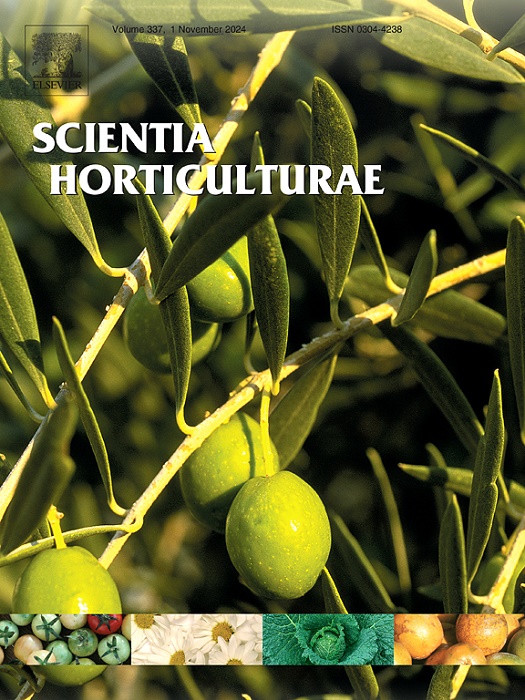Innovative strategies for alleviating chromium toxicity in tomato plants using melatonin functionalized zinc oxide nanoparticles
IF 3.9
2区 农林科学
Q1 HORTICULTURE
引用次数: 0
Abstract
This study investigates the biosynthesis, characterization, and application of melatonin-functionalized zinc oxide nanoparticles (ZnO NPs@MT) in alleviating chromium (Cr) toxicity in tomato plants. The biosynthesis of ZnO NPs@MT was achieved using leaf extract from Achillea millefolium. The characteristic properties of ZnO NPs@MT were analyzed using UV–Vis spectroscopy, FESEM, XRD, and HR-TEM. UV–Vis analysis revealed a distinct absorption peak at 366 nm, confirming the formation of pure ZnO NPs@MT with a band gap of 3.39 eV SEM and HR-TEM investigations showed uniformly dispersed rod-shaped particles with an average length of 154 nm and a breadth of 24 nm. XRD patterns confirmed the hexagonal crystallinity of the highly pure ZnO NPs@MT synthesized via the green method. Treatment with ZnO NPs@MT effectively mitigated Cr-induced stress in tomato plants. Cr spiked plants treated with ZnO NPs@MT exhibited a significant increase in root and shoot lengths by 119.5% and 134.7%, respectively. Photosynthetic parameters, including chlorophyll content, CO2 assimilation rate, and stomatal conductance, improved markedly under Cr stress. Antioxidant enzyme activities were enhanced, bolstering the oxidative stress response. Furthermore, ZnO NPs@MT application reduced electrolyte leakage, malondialdehyde, and hydrogen peroxide levels, indicating decreased cellular damage. Increased concentrations of proline and glycine betaine were also observed, contributing to enhanced stress tolerance. Overall, the application of ZnO NPs@MT demonstrates a promising strategy for improving stress resilience in tomato plants, underscoring their potential in sustainable agricultural practices.
求助全文
约1分钟内获得全文
求助全文
来源期刊

Scientia Horticulturae
农林科学-园艺
CiteScore
8.60
自引率
4.70%
发文量
796
审稿时长
47 days
期刊介绍:
Scientia Horticulturae is an international journal publishing research related to horticultural crops. Articles in the journal deal with open or protected production of vegetables, fruits, edible fungi and ornamentals under temperate, subtropical and tropical conditions. Papers in related areas (biochemistry, micropropagation, soil science, plant breeding, plant physiology, phytopathology, etc.) are considered, if they contain information of direct significance to horticulture. Papers on the technical aspects of horticulture (engineering, crop processing, storage, transport etc.) are accepted for publication only if they relate directly to the living product. In the case of plantation crops, those yielding a product that may be used fresh (e.g. tropical vegetables, citrus, bananas, and other fruits) will be considered, while those papers describing the processing of the product (e.g. rubber, tobacco, and quinine) will not. The scope of the journal includes all horticultural crops but does not include speciality crops such as, medicinal crops or forestry crops, such as bamboo. Basic molecular studies without any direct application in horticulture will not be considered for this journal.
 求助内容:
求助内容: 应助结果提醒方式:
应助结果提醒方式:


